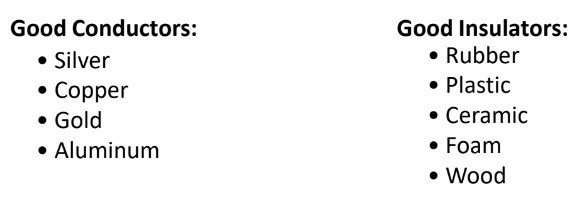
Overview
Title: Classroom Carousel Discussion
Grade: 5th Grade
Duration: 30 Minutes
Standards
Science: SC.5.P.10.3
Investigate and explain that an electrically charged object can attract an uncharged object and can either attract or repel another charged object without any contact between objects.
Science: SC.5.P.11.2
Identify and clarify materials that conduct electricity and materials that do not.
Language Arts: LAFS.5.SL.1.1
Engage effectively in a range of collaborative discussions (one-on-one, in groups, and teacher-led) with diverse partners on grade 5 topics and texts,building on others’ ideas and expressing their own clearly.
The following activity will be used as a formative assessment to gauge students’ prior knowledge about energy charges and conductors/insulators.
Essential Questions
- What causes an electric charge to occur?
- What is the relationship between and insulator and a conductor?
Vocabulary
Static Electricity • Force • Electric Force • Repel • Attract • Electric Discharge • Magnet • Insulator • Conductor
Background Information
Electric charge occurs when a buildup of electricity transfers from one object to another. The electric force will either attract or repel depending on the charge. There are good and bad conductors of heat and electricity.
Essential Questions
- Is there more than one source of energy?
- What are some sources of energy?
- What is meant by a renewable energy source?
- What are some examples of renewable energy?
- What is meant by a non-renewable energy source?
- What are some examples of non-renewable energy?
- Discuss major differences between non-renewable and renewable/alternative energy sources.
- Do you know of any places where renewable/alternative energy sources are regularly being used?
- What are the benefits of using renewable energy?
- Why don’t we use renewable energy all of the time?

Materials
- Post-it Notes
- Pencil
- Copy of Guided Questions
In this interactive and communicative activity, the teacher will choose and place four to six discussion questions around the room with a set of Post-It notes. They will then have a small group of students at each question in order to collaborate with one another. This strategy allows students to get up and move around the room (like a carousel) to discuss and generate multiple answers for each question.Teachers can modify the activity to meet their students’ needs.
Procedure
- Place four to six of the guiding questions around the room.
- Explain to the students that they will be moving around the room (like a carousel) to collaborate with one another and generate answers for the questions.
- Place students in groups (this will vary depending how many questions you put up and how many students you have in your class).
- The students will discuss each question and then write one idea they discussed on one of the Post-It notes.
- Each group will then rotate to the next question and read the question and the responses from the previous group(s).
- They will then discuss and come up with a new idea to write down on a new Post-It note.
- Continue until all teams visit each question.
- After the last rotation, go around the room and have students share two or three responses they feel best answered the question from question they ended up in front of.
Guiding Questions
- How does electricity work?
- What materials are good conductors of electricity?
- What parts are needs in order to make an electrical circuit?
- What is an electrical current and how do they work?
- How can electrical currents be used in order to make a magnet?
- What can electricity flow through?
- What are the effects of moving charges?
- What causes an atom to have a negative or positive charge?
- What are the effects of moving charges?
- What causes an atom to have a negative or positive charge What effect might be caused by electrons being loosely bound to atoms in a material?
- Is it possible to categorize all conductors as metals? Why or why not?
- What is the difference between an insulator and a conductor?
- If an insulator is placed into a series circuit containing a battery and a light bulb,will the light bulb be able to light? Why or why not?
- If a conductor is placed into a series circuit containing a battery and a light bulb,will the light bulb be able to light? Why or why not?
- What is static electricity?
- Have you ever dragged their feet across the room? What happened when they touched something afterward?
- Have you ever received a shock when they’ve touched something? Have you ever shocked someone?
Inquiry Type
- Structured Inquiry – Class Discussion
Teacher Resources
- Guiding Questions – Class Discussion

